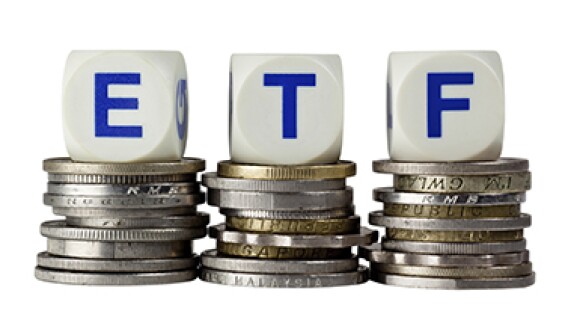ETF investing is a good way for individual investors to gain exposure to a red-hot sector or index. Heretofore, ETFs have largely been an alternative, niche way to invest—at least globally. According to a new report, it’s about to become a whole lot more mainstream.
Moody’s Investors Service published a report last week forecasting that ETF investing in America will nearly double by 2024. At present, passive investments—an all-encompassing term that includes both exchanged-traded funds and index funds—have 28.5% penetration in U.S. financial markets. Moody’s expects that number to reach more than 50% within the next seven years.
The ETF boom could be “even greater” overseas, said Moody’s Stephen Tu. Passive investment penetration is between 5% and 15% in Europe and Asia, mostly due to lack of investor awareness about such products. One big reason for the expected ETF influx is weak performance by actively managed funds, 82% of which have underperformed the market over the last 10 years. Another is the high costs associated with handing your money over to a fund manager.
[text_ad use_post='129620']
We occasionally recommend ETFs when the opportunity is right. ETF investing is an efficient way to gain maximum exposure when there’s strength in an entire sector or index. But while investing in ETFs can be a useful tool, stock picking, which is our focus here at Cabot, allows you to better control your own investment destiny. That’s why we publish 12 investment newsletters catering to various investing styles—to give you, the individual investor, the power to choose what you want to invest in, without any hidden fees. There’s a reason ETFs are called “passive investments.” An explosion in passive investing in the coming years isn’t entirely positive.
For investors wanting to beat the market, stock picking is the better option. You can’t beat the market if you simply buy, say, the SPY ETF, a proxy for the S&P 500. And with sector ETFs, you have to worry about way more potential headwinds (a bad economic report, White House policy changes, inflammatory Trump Tweets) hurting your investment than if you own a stock or two within that industry. Good growth stocks rely on strong fundamentals, growing sales and earnings, exciting and innovative products, solid business models, shareholder-friendly practices, etc. Unlike sector ETFs, stocks are less prone to what’s going on at another company.
So while ETF investing on your own is superior to blindly handing your money over to a fund manager, it works best in small doses. Perhaps Moody’s is right, and people around the world will start pouring into ETFs in the coming years. But that doesn’t mean you need to be one of them.
[author_ad]


